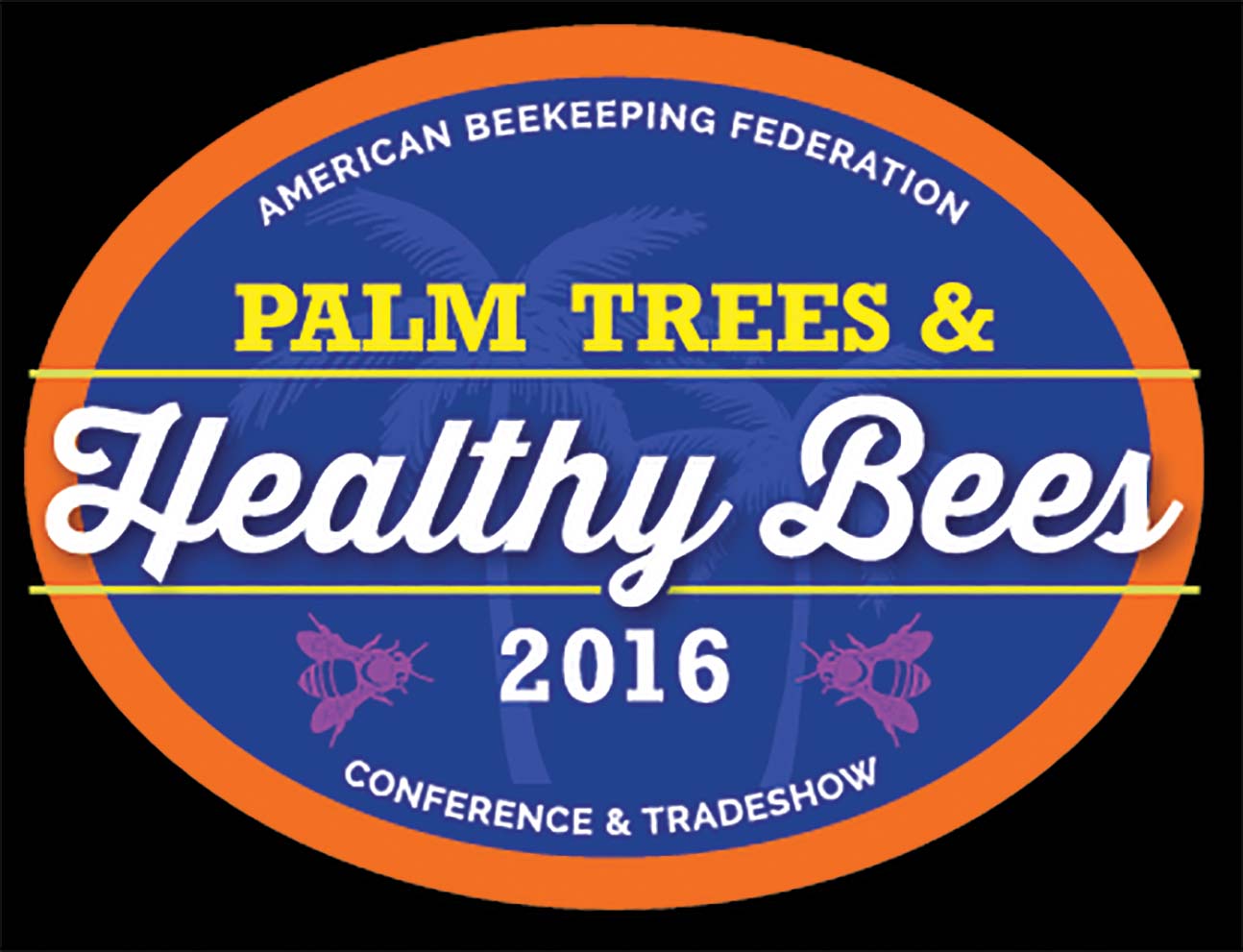by Clarence Collison

Honey bee nutrition plays a vital part in developing and maintaining healthy and strong colonies. Carbohydrates are essential as they provide energy for all activities within the hive and during foraging. Honey bees naturally obtain carbohydrates by collecting honeydew or nectar. When natural sources are limited or harvesting honey by humans has removed a colony’s supply of carbohydrates, supplemental feeding by beekeepers is necessary and commonly done (Haydak 1970; Brodschneider and Crailsheim 2010). Usually sucrose solution, inverted sugar syrup, or other syrups such as starch syrup or high fructose corn syrup (HFCS) are used for that purpose (Jachimowicz and El Sherbiny 1975; LeBlanc et al. 2009; Brodschneider et al. 2010; Brodschneider and Crailsheim 2010). Since it was found that some sugars, such as galactose, mannose and lactose are toxic to honey bees in certain concentrations (Barker and Lehner 1976; Barker 1977), these sugars have not yet found their way into supplemental feeding.
In addition to toxic sugars, another toxic substance that can be found in syrups that are fed for colony nutrition and survival is 5-hydroxymethyl-2-furaldehyde or, as it is more commonly referred to as, 5-hydroxymethylfurfural (HMF). Hydroxymethylfurfural is a chemical compound that is formed from carbohydrates, especially fructose, under thermal and/or acid-catalyzed degradation conditions. HMF is widely recognized as a marker of quality deterioration, resulting from excessive heating or inappropriate storage conditions in a wide range of foods including juices, jams, syrups and honey (Jachimowicz and El Sherbiny 1975; Alabdeen Makawi et al. 2009; LeBlanc et al. 2009; Zirbes et al. 2013). In fact, the Codex Alimentarius of the World Health Organization and the European Union (EU Directive 110/2001) have defined a maximum HMF quality level in honey as 40 mg/kg as a deterioration and heat treatment indicator for temperate regions and 80 mg/kg for tropical climates.
In the United States, high-fructose corn syrup (HFCS) has become a sucrose replacement for honey bees and has widespread use as a sweetener in many processed foods and beverages for human consumption. It is utilized by many commercial beekeepers as a food for honey bees for several reasons: to promote brood production after bees have been moved for commercial pollination, when field-gathered nectar sources are scarce and to boost food reserves for overwintering colonies.
High-fructose corn syrups (HFCS) are obtained by enzymatic isomerization of corn syrups, which can be produced by both acid and enzymatic hydrolysis of cornstarch; the enzymatic procedure is the most utilized in the manufacturing process. Originally, acids were used to convert the corn starch into a glucose/fructose mixture; sodium hydroxide (NaOH) and hydrochloric acid (HCL). Newer processes include using chemicals and genetically modified bacteria. Three different enzymes (α-amylase, glucoamylase, and glucose-isomerase) are needed to transform cornstarch into the simple sugars glucose and fructose. After a complex fractionation and combination process, mixtures with various amounts of fructose can be obtained: HFCS-42 (42% of fructose), HFCS-55 (55% of fructose), or HFCS-90 (90% of fructose). The remainder of the sugar fraction is glucose and some traces of unnamed oligosaccharides. These water based formulations range from 71-77% dissolved solids (LeBlanc et al. 2009). The fructose/glucose ratio is such that crystallization is avoided, and the low pH allows the HFCS to resist fermentation and bacterial contamination (Ruiz-Matute et al. 2010).
Due to the ease of handling HFCS over mixing sucrose solutions and cheaper pricing, the use of HFCS for bee feed increased rapidly. However, questions about the safety of HFCS as a bee food were raised soon after it became available, because beekeepers reported mixed results from feeding it (Bailey 1966; Johansson and Johansson 1976, 1977; Anonymous 1996). In addition, researchers found decreased longevity in worker bees maintained in the laboratory on HFCS as compared to honey (Barker and Lehner 1978) or to sucrose syrup (Weiss 2009).
Honey bee colony feeding trials were conducted to determine whether differential effects of carbohydrate feeding (sucrose syrup vs. high fructose corn syrup) could be measured between colonies fed exclusively on these syrups (Sammataro and Weiss 2013). In one experiment, there was a significant difference in mean wax production between the treatment groups and a significant interaction between time and treatment for the colonies confined in a flight arena. On average, the colonies supplied with sucrose syrup built 7,916.7 cm2 honeycomb, while the colonies supplied with high fructose corn syrup built 4,571.6 cm2. The mean mass of bees supplied with HFCS was 4.65 kg, while those supplied with sucrose had a mean of 8.27 kg.
There was no significant difference between treatment groups in terms of brood rearing. Differences in brood production were complicated due to possible nutritional deficiencies experienced by both treatment groups. In the second experiment, colonies supplemented with sucrose syrup through the winter months at a remote field site exhibited increased Spring brood production when compared to colonies fed with HFCS. The differences in adult bee populations were significant, having an overall average of 10.0 frames of bees fed the sucrose syrup compared to 7.5 frames of bees fed exclusively on HFCS.
Contamination of honey and different sugar solutions with HMF has been extensively investigated. LeBlanc et al. (2009) found HMF concentrations of commercially available HFCS of different brands ranging between 3.1 and 28.7 ppm HMF for fresh syrups. They also analyzed the formation of HMF in several samples of HFCS under different temperature conditions. Results showed that constant high temperatures can cause high levels of HMF, especially in acid-catalyzed HFCS. For example, a temperature of 49ºC (120.2ºF) can cause a formation of more than 200 ppm HMF over a period of 36 days. Some samples exposed to 69ºC (156.2ºF) for the same time amounted to HMF values higher than 30,000 ppm HMF. Ruiz-Matute et al. (2010) found HMF concentrations ranging from 26.9 to 102.3 ppm in samples of HFCS. Samples supplied by manufactures showed lower HMF levels than those supplied by beekeepers. Suggesting the former were fresh and properly stored. The syrup samples containing the highest concentrations of HMF were stored in metal tanks, standing outside unprotected from sunlight, and hence, were likely exposed to high temperatures, especially during the Summer months.
Fresh honey usually contains no or low amounts of HMF (Bogdanov et al. 1999). Due to this fact, the HMF content has become one of the most important criteria in honey quality evaluation (White 1994). On the European market, honey must contain less than 40 ppm HMF when sold (Codex Alimentarius Commission 2001; Council Directive 2002). Due to improper storage, honey, that naturally shows an average pH of 3.91 for floral and 4.45 for honeydew honey (Doner 1977), can develop a high concentration of HMF during storage, just like HFCS, which is quite similar in sugar composition and ph-value (Ruiz-Matute et al. 2010). Short-term heating of different honey samples for 60 seconds at 100ºC (212ºF) caused an increase of HMF concentration from 3.9 to 10.1 ppm HMF (Tosi et al. 2001). Karabournioti and Zervalaki (2001) exposed honey of several botanic origins to different temperatures for 24 hours. They found HMF concentrations ranging from 1.9-29.2, 2.2-32.6, 4.3-39 ppm HMF at temperatures of 35, 45 and 55ºC (95º, 113º, 131ºF), respectively. Exposure to 75ºC (167ºF) for 24 hours resulted in HMF concentrations from 43.4 to 226 ppm HMF. Ajlouni and Sujirapinyokul (2010) found HMF values ranging from 0.36 to 34 ppm in fresh, unprocessed, and 2.2 to 75 ppm in commercially-processed Australian honey samples. Additionally, they observed that five out of seven short term (two minute) heat-treated samples of honey showed significant increased HMF values. Alabdeen Makawi et al. (2009) found high HMF concentrations in Sudanese honey samples (up to 922 ppm), which had been stored for several years.
Numerous studies have shown that HMF can be toxic to adult honey bees. Bailey (1966) discovered that honey stored for many years and, therefore, contained high amounts of HMF caused increased mortality to bees, as compared to fresh honey. He also observed that HMF caused gut ulceration, resulting in dysentery. Jachimowicz and El Sherbiny (1975) showed that a level of 150 ppm HMF in an inverted sugar solution (produced by acid hydrolysis) containing glucose, fructose and sucrose caused significantly increased mortality within 20 days in caged bees. A concentration of 30 ppm HMF, which is below the maximum allowed in honey, did not cause a significant difference in mortality of adults. LeBlanc et al. (2009), feeding HMF contaminated HFCS, reported results very close to those of Jachimowicz and El Sherbiny (1975) and found that over a period of 26 days, 250 ppm HMF caused mortality significantly higher than found in any of the other (lower) treatment groups. Smodiš Škerl and Gregorc (2014) investigated the longevity of workers fed with purchased and homemade sugar candies containing different concentrations of HMF and found that caged bees fed with 915 and 437 ppm HMF had a shorter lifespan as compared to test groups receiving 53.3 or lower ppm HMF. The toxicity of HMF to honey bees is increased by syrup crystallization. During the crystallization process, a part of the syrup becomes solid and the HMF is concentrated in the liquid portion, being the unique phase accessible to honey bees (Wilmart et al. 2011 as cited by Zirbes et al. 2013).
Since HMF is toxic to adult honey bees, Krainer et al. (2015) investigated the toxicity of HMF towards larvae. Artificially reared larvae were exposed to a chronic HMF intoxication over six days using six different concentrations (5, 50, 750, 5000, 7500 and 10,000 ppm) and a control. The mortality was assessed from day two to day seven and on day 22. Concentrations ranging from five to 750 ppm HMF did not show any influence on larval or pupal mortality compared to controls. Concentrations of 7500 ppm or higher caused a larval mortality of 100%. An experimental LC50 of 4280 ppm on day seven and 2424 ppm on day 22 was determined. The calculated LD50 was 778 µg HMF per larva on day seven and 441 µg HMF on day 22. They also exposed adult honey bees to high concentrations of HMF to compare the mortality to the results from larvae. On day seven larvae are much more sensitive against HMF than adult honey bees after six days of feeding. However, on day 22 after emergence adults show a lower LC50, which indicates a higher sensitivity than larvae. As toxicity of HMF against honey bees is a function of time and concentration, their results indicate that HMF in supplemental food will probably not cause great brood losses. Yet sublethal effects might decrease fitness of the colony.
References
Ajlouni, S. and P. Sujirapinyokul 2010. Hydroxymethylfurfuraldehyde and amylase contents in Australian honey. Food Chem. 119: 1000-1005.
Alabdeen Makawi, S.Z., M.I. Taha, B.A. Zakaria, B. Siddig, H. Mahmod, A.R.M. Elhussein and E.A. Gad Kariem 2009. Identification of 5-hydroxymethylfurfural HMF in some sugar containing food products by HPLC. Pak. J. Nutr. 8: 1391-1396.
Anonymous 1996. Beware of off-Spec corn syrup for bee feeding. Am. Bee J. 136: 782-783.
Bailey, L. 1966. The effect of acid-hydrolyzed sucrose on honeybees. J. Apic. Res. 5: 127-136.
Barker, R.J. 1977. Some carbohydrates found in pollen and pollen substitutes are toxic to honeybees. J. Nutr. 107: 1859-1862.
Barker, R.J. and Y. Lehner 1976. Glactose, a sugar toxic to honey bees, found in exudates of tulip flowers. Apidologie 7: 109-112.
Barker, R.J. and Y. Lehner 1978. Laboratory comparison of high fructose corn syrup, grape syrup, honey and sucrose syrup as maintenance food for caged honey bees. Apidologie 9: 111-116.
Bogdanov, S. et al. 1999. Honey quality and international regulatory standards-review by the International Honey Commission. Bee World 80: 61-69.
Brodschneider, R. and K. Crailsheim 2010. Nutrition and health in honey bees. Apidologie 41: 278-294.
Brodschneider, R., R. Moosbeckhofer and K. Crailsheim 2010. Surveys as a tool to record winter losses of honey bee colonies: a two year case study in Austria and Southern Tyrol. J. Apic. Res. 49: 23-30.
Codex Alimentarius Commission 2001. Revised codex standard for honey. Codex Standard: 12-1981. Food and Agriculture Organization of the United Nations and the World Health Organization, Rome, Italy.
Council Directive 2002. 2001/110/EC of 20 December 2001 relating to honey. Off. J. Eur. Commun. L10: 47-52.
Doner, L.W. 1977. The sugars of honey. J. Sci. Food Agric. 28: 443-456.
Haydak, M.H. 1970. Honey bee nutrition. Annu. Rev. Entomol. 15: 143-156.
Jachimowicz, T. and G. El Sherbing 1975. Problems of invert sugar as food for honeybees. Apidologie 6: 121-143.
Johansson, T.S.K. and M.P. Johansson 1976. Feeding sugar to bees. Bee World 57: 137-143.
Johansson, T.S.K. and M.P. Johansson 1977. Feeding sugar to bees. Bee World 58: 11-18, 49-52.
Karabournioti, S. and P. Zervalaki 2001. The effect of heating on honey HMF and invertase. Apiacta 36: 177-181.
Krainer, S., R. Brodschneider, J. Vollmann, K. Crailsheim and U. Riessberger-Gallé 2015. Effect of hydroxymethylfurfural (HMF) on mortality of artificially reared honey bee larvae (Apis mellifera carnica). Ectoxicology doi: 10.1007/s10646-015-1590-x.
LeBlanc, B.W., G. Eggleston, D. Sammataro, C. Cornett, R. Dufault, T. Deeby and E. St. Cyr 2009. Formation of hydroxymethylfurfural in domestic high-fructose corn syrup and its toxicity to the honey bee (Apis mellifera). J. Agric. Food Chem. 57: 7369-7376.
Ruiz-Matute, A.I., M. Weiss, D. Sammataro, J. Finley and M. L. Sanz 2010. Carbohydrate composition of high-fructose corn syrups (HFCS) used for bee feeding: effect on honey composition. J. Agric. Food Chem. 58: 7317-7322.
Sammataro, D. and M. Weiss 2013. Comparison of productivity of colonies of honey bees, A. mellifera, supplemented with sucrose or high fructose corn syrup. J. Insect Sci. 13:19. www.insectscience.org/13.19
Smodiš Škerl, M.I. and A. Gregorc 2014. A preliminary laboratory study on the longevity of A. m. carnica honey bees after feeding with candies containing HMF. J. Apic. Res. 53: 422-423.
Tosi, E., M.C. Ciappini, E. Re and H. Lucero 2001. Honey thermal treatment effects on hydroxymethylfurfural content. Food Chem. 77: 71-74.
Weiss, M. 2009. Supplemental Carbohydrates in Apiculture: Effects upon Honey Bee (Apis mellifera) Health and Productivity. M.S. thesis, Department of Entomology, University of Arizona, Tucson.
White, J.W. 1994. The role of HMF and diastase assays in honey quality evaluation. Bee World 75: 104-117.
Zirbes, L., B.K. Nguyen, D.C. deGraaf, B.D. Meulenaer, W. Reybroeck, E. Haubruge, and C. Saegerman 2013. Hydroxymethylfurfural: a possible emergent cause of honey bee mortality? J. Agric. Food Chem. 61: 11865-11870.
Clarence Collison is an Emeritus Professor of Entomology and Department Head Emeritus of Entomology and Plant Pathology at Mississippi State University, Mississippi State, MS.





